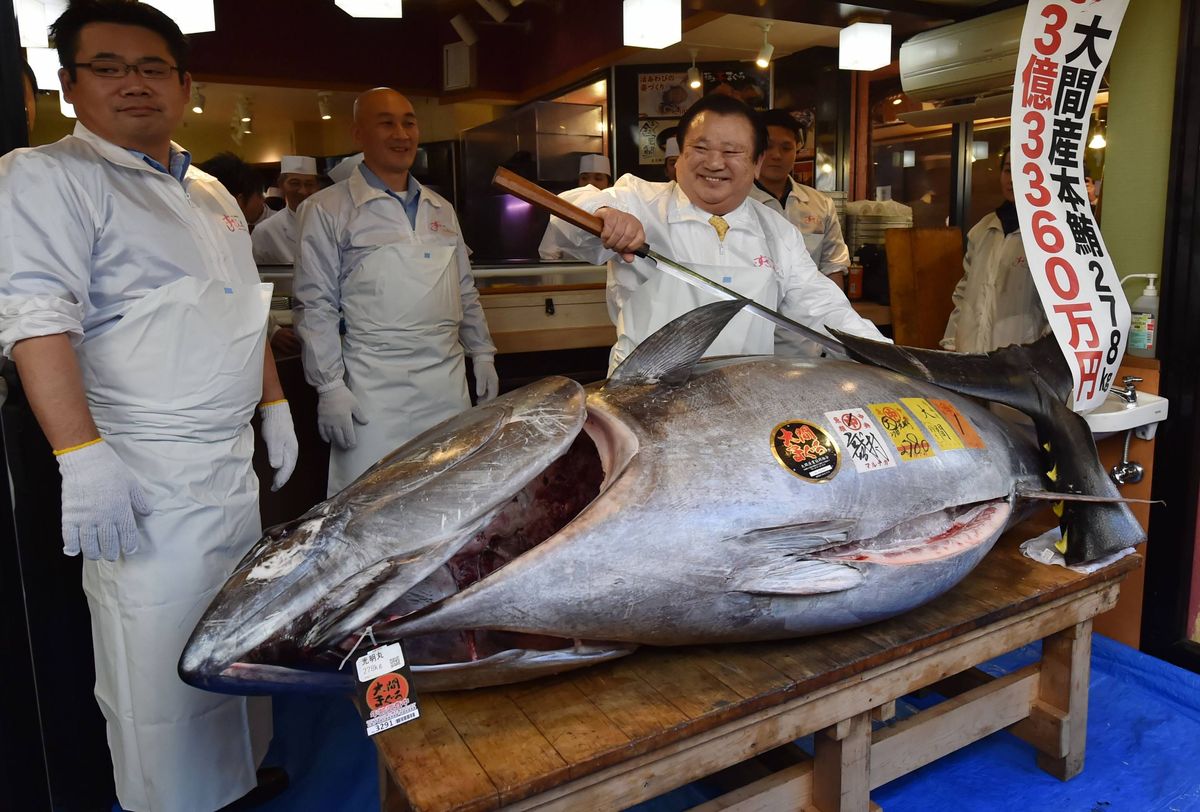Tuna sells for $1.8 million at Tokyo auction

A few minutes every morning is all you need.
Stay up to date on the world's Headlines and Human Stories. It's fun, it's factual, it's fluff-free.
A bluefin tuna has sold for $1.8 million in the first auction of the new year at Tokyo’s Toyosu Fish Market, marking the second-highest price ever to be paid in a fish auction. The tuna weighed 276 kg (608 lb) and was caught off the northern Aomori Prefecture.
According to state broadcaster, Nippon Hoso Kyokai (NHK), the successful bidder was Kiyoshi Kimura, head of Sushizanmai – a sushi restaurant chain. Kimura was dubbed “The Tuna King” after he paid a record $3.14 million to become the successful bidder for a 278 kg (612 lb) tuna in 2018.
The Tuna King is no stranger to media attention for paying exorbitant amounts of money for fish. “Yes, this is expensive, isn’t it? I want our customers to eat very tasty ones this year too,” he told reporters at the auction.
Why bluefin tuna is so expensive
Due to a high demand in Japan, the bluefin tuna fetches the highest prices at market auctions. It is the largest and most fatty tuna fish and it is a favorite at Japanese sushi restaurants.
As of 2015, a large bluefin has been going for $50,000 to $70,000 in Japan, meaning most American markets cannot compete. As Japanese demand increases, fewer bluefin reach breeding age, significantly reducing populations through overfishing – likely skyrocketing prices again.
Extinction concerns
All three species of bluefin tuna are currently overfished and over the last few years, attempts to protect the bluefin tuna have been prevented by fishing interest groups in Japan, New Zealand the US, as well as some Mediterranean countries. The three species of bluefin are the Atlantic, Pacific and Southern, with the Atlantic being the largest and most endangered.
Most catches of Atlantic bluefin tuna are taken from the Mediterranean Sea, which is the main bluefin tuna fishery in the world.
To improve breeding stock and keep a steady supply of bluefin, aquaculturists are working to establish sea farms where schools of tuna are raised in the open ocean and then herded to market.
This practice is seen as a sustainable sushi movement. However, it is a seemingly difficult task as bluefin is a delicate species and not fit for farming. It took the research team at Japan’s Kinki (Kindai) University 32 years to successfully establish a fully-closed life-cycle farming program for bluefin tuna.
Have a tip or story? Get in touch with our reporters at tips@themilsource.com




Comments ()